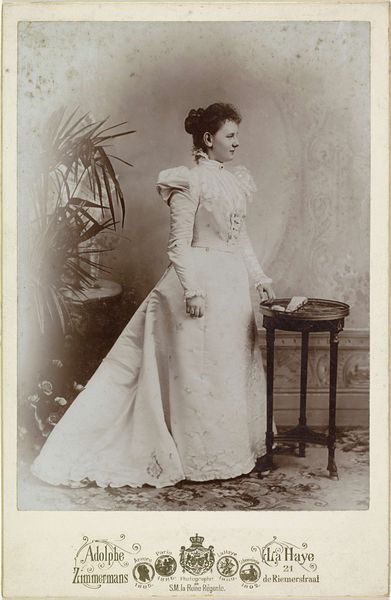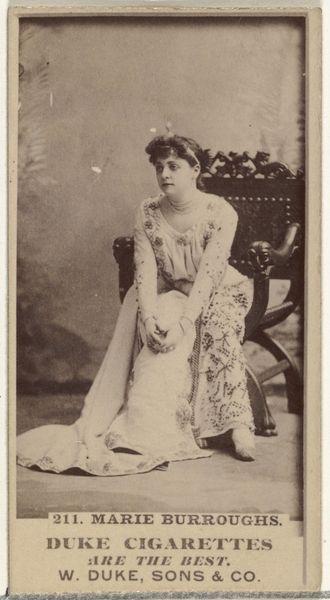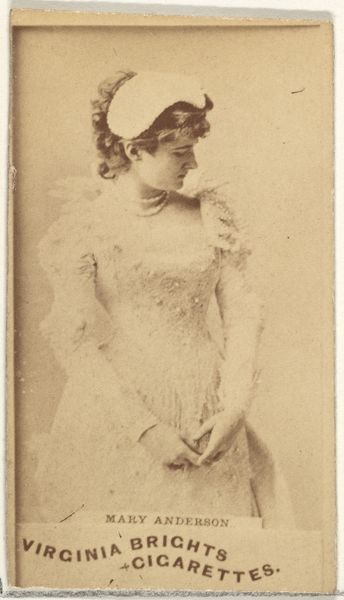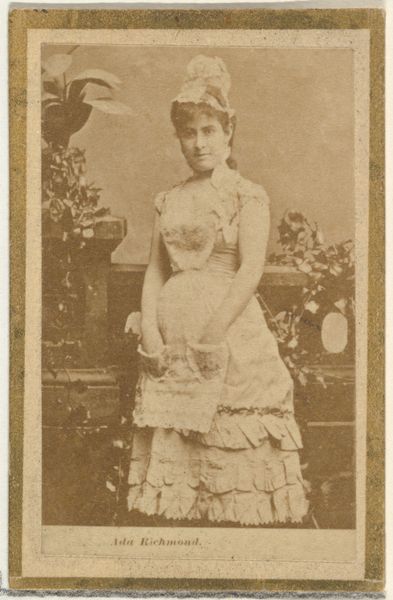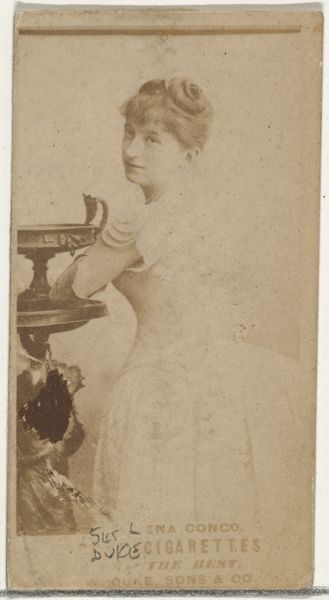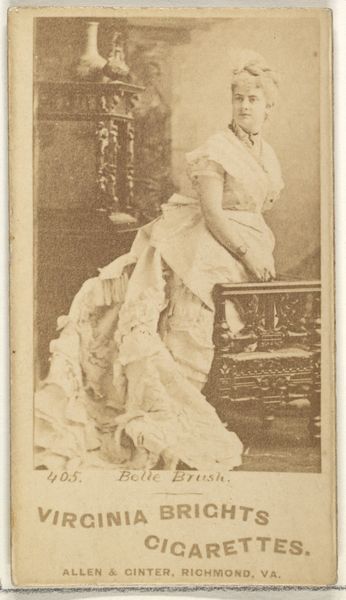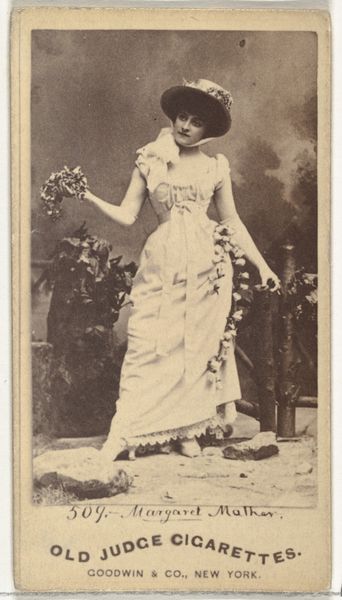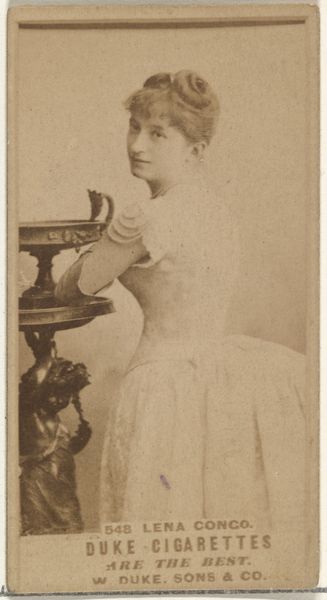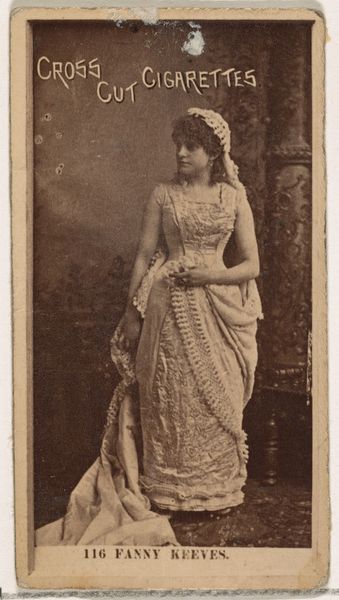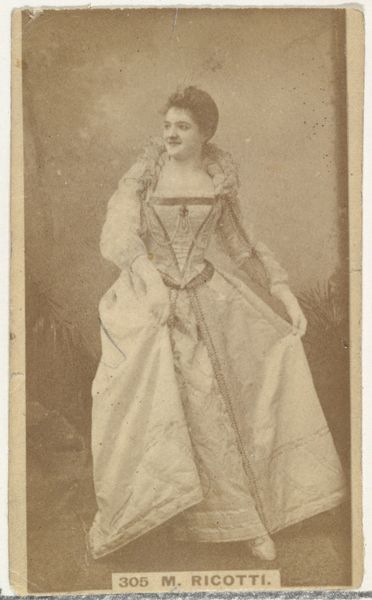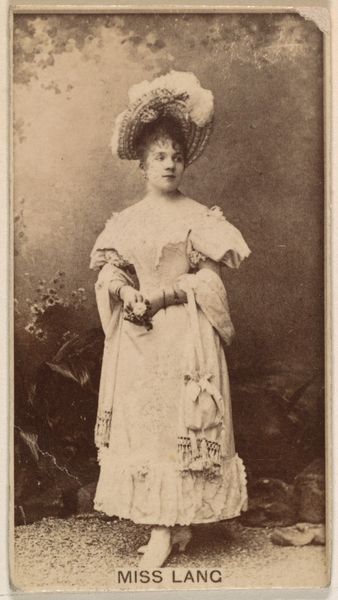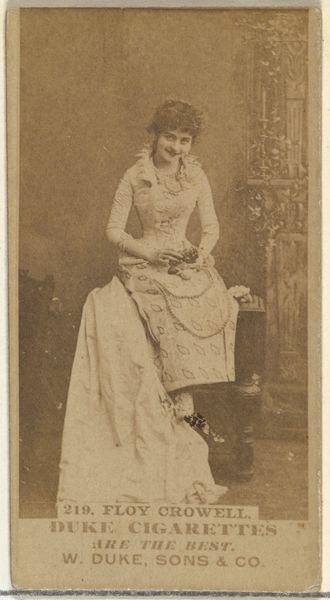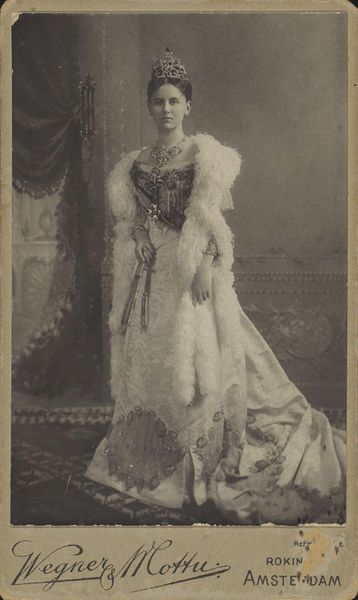
Zelia de Lussan, from the Actors and Actresses series (N171) for Gypsy Queen Cigarettes 1886 - 1890
0:00
0:00
drawing, print
#
portrait
#
drawing
#
yellowing
#
aged paper
#
yellowing background
#
photo restoration
# print
#
old engraving style
#
historical photography
#
old-timey
#
19th century
#
men
#
golden font
#
word imagery
Dimensions: sheet: 2 11/16 x 1 3/8 in. (6.9 x 3.5 cm)
Copyright: Public Domain
Editor: Here we have a promotional card featuring Zelia de Lussan, an opera singer, from the series “Actors and Actresses” produced by Goodwin & Company for Gypsy Queen Cigarettes between 1886 and 1890. It's a small print, probably a drawing originally, with a slightly aged feel. It's interesting to see celebrity endorsements used even back then. What catches your eye about this image? Curator: This isn’t just a picture of a singer, it’s a commodity produced within a specific system. Consider the context: late 19th-century America, burgeoning industrialization, and mass consumerism. This card served a dual purpose—advertising cigarettes and acting as a collectible. The means of production are crucial. Think about the paper, the printing process, the labor involved in both creating the image and packaging the cigarettes. The “Gypsy Queen” brand itself relies on a romanticized, even appropriative, image. What does that tell us about the targeted consumer and their aspirations? Editor: So, it’s not just about Zelia de Lussan, but the whole industry around her image. The materials speak to the era, the aspirations... I hadn’t really thought about it that way. Does her pose or clothing also fit into this materialist view? Curator: Absolutely. Her elaborate dress and elegant pose speak to a certain level of luxury and aspiration that the consumer of “Gypsy Queen” cigarettes might desire. How is her image being used to sell not just a product but an idea? Think about how celebrity endorsements function even today; the means of production and the creation of desire haven’t really changed, have they? Editor: That’s a fascinating point. So, this small card encapsulates a whole network of production, consumption, and even cultural appropriation. I'll never look at trading cards the same way! Curator: Exactly! It demonstrates how art is embedded in social and economic processes. Hopefully it broadens our perception beyond aesthetics to consider the making and meaning of such ephemera.
Comments
No comments
Be the first to comment and join the conversation on the ultimate creative platform.
